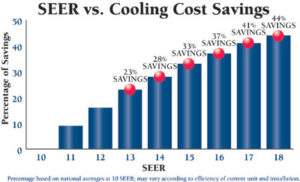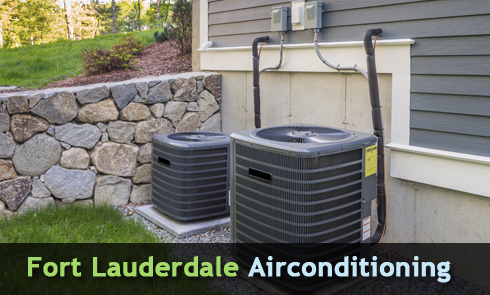 Seasonal Energy Efficiency Ratio (SEER) is a metric used to rate the efficiency of air conditioners. SEER is clearly defined by the Air Conditioning, Heating, and Refrigeration Institute in its 2008 AHRI 210/240 standard. Europe also has a similar standard known as the European seasonal energy efficiency ratio (ESEER).
Seasonal Energy Efficiency Ratio (SEER) is a metric used to rate the efficiency of air conditioners. SEER is clearly defined by the Air Conditioning, Heating, and Refrigeration Institute in its 2008 AHRI 210/240 standard. Europe also has a similar standard known as the European seasonal energy efficiency ratio (ESEER).
The SEER rating if any appliance refers to the cooling output divided by the total energy input. The higher the SEER rating, the more energy efficient the unit is. In the United States, the SEER is interpreted as the ratio of cooling which compares the British thermal unit (BTU) against the energy consumed.
Seasonal Energy Efficiency Ratio is related closely to the coefficient of performance (COP) which is normally used in thermodynamics. The only difference between the COP and SEER is that COP does not have units because the numerator and the denominator are all expressed in the same units. The SEER, on the other hand, uses mixed units and is obtained by multiplying the COP by a conversion factor changing it from BTU/h to Watts.
The SEER represents the expected performance of a unit for the entire year in a given location. When calculating the SEER, the same indoor temperatures are used however the outside temperature varies from 18 °C to 40 °C.
As of January 2006, residential air conditioners sold in the United States were required to have a SEER rating of not less than 13. The Energy Star only qualifies central air conditioners that have a rating of at least 14. It is very rare in the current HVAC market to see ac systems that have a rating below 9. This is because the aging and existing units are being replaced with new and higher efficiency units. The US requires that all residential systems manufactured beyond 2005 to have a minimum rating of 13 with the exception of window units which can have SEER rating of 10.
More efficient ac systems mean higher energy savings. For instance, upgrading from SEER 9 to SEER 13 reduces your power consumption by about 30 percent. In monetary terms, this translates to $300 per year.
There is a variety of SEERs to choose from when specifying new installations or replacing equipment. Most applications prefer minimum SEER units because they are considered cost-effective. However, longer cooling seasons require higher electricity costs and purchasing SEER units with a higher rating is justified.
In addition to the standard SEER 13 units, there are residential split systems that have SEER 20 and above. They have larger coils and more than one compressor which make them very efficient.





